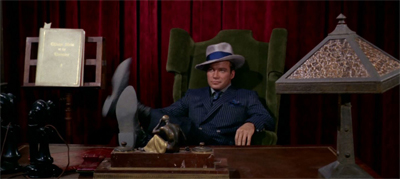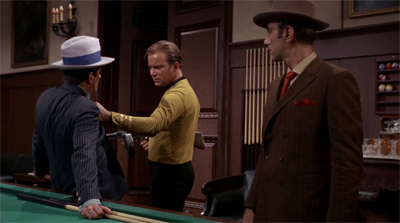The Ballad of Buster Scruggs is not so much a set of stories about the Old West, more a set of stories about the stories that are told about the Old West.
To be fair, the anthology film wears this premise on its sleeve. The Ballad of Buster Scruggs is by its nature an omnibus of short stories, drawing its audience’s attention to the format through the framing device of an anonymous hand leafing gently through an old hardcover book of short stories. Even within the individual stories, the Coen Brothers frequently nest smaller and more intricate narratives; whether stories shared at dinner, great works recited for an enchanted audience, or even just strangers in a stage coach making awkward conversation with one another.

The rifle man.
In the film’s final segment, The Mortal Remains, the self-described “distractor” Thigpen explains that he distracts his quarry through stories. “People can’t get enough of them,” he assures his audience. “Because people connect the stories to themselves, I suppose. And we all love hearing about ourselves. So long as the people in the stories are us… but not us.” In its own weird way, positioned at the tail end of the narrative, Thigpen seems to offer something of a thesis statement for The Ballad of Buster Scruggs, a story about stories. In particular, a story about certain types of stories.
The Ballad of Buster Scruggs is decidedly uneven, as anthology films tend to be. That said, the quality is high enough (and the stories disparate enough) that it’s easy to imagine that each story of the six might be someone‘s favourite. The Coen Brothers very cannily and very astutely ensure a great variety in tone across the six installments, which range from gleefully nihilistic, to sombre and withdrawn, to eerie and uncanny. However, they are connected by a series of recurring preoccupations about life of the frontier and man’s awkward relationship to both that wilderness and his fellow man.

No need to make a song and dance about it.
The Ballad of Buster Scruggs is not consistent enough to rank among the Coens’ best work. While the movie maintains a consistent perspective and philosophical vantage point across its two-hour-and-ten-minute runtime, the individual stories vary so wildly in terms of aesthetic and rhythm that the film never quite coheres as well as it might. At the same time, The Ballad of Buster Scruggs contains enough delightful details in its smaller moments that linger, suggesting that the film might best be remembered as a collection of inspired moments rather than as a satisfying whole.
The Ballad of Buster Scruggs is not so much a ballad as a concept album.

Don’t leave him hanging.
Continue reading →
Filed under: Non-Review Reviews | Tagged: anthology, capitalism, coen brothers, film, frontier, individualism, Movie, narratives, netflix, non-review review, old west, review, stories, The Ballad of Buster Scruggs, western | 2 Comments »




































